Similar presentations:
Subject and Aims of the History of English
1. Lecture 1
Subject and Aims of theHistory of English.
Chronological divisions in the
History of English
2.
Every living language issubjected to growth and decay.
Its modern state is the result of
manifold changes and
transformations, which it
underwent in the course of its
history, in the course of its
development.
3.
In the structure of everylanguage: both diachronic
elements (remnants of old
conjugations, declensions),
and new elements reflecting
the latest trends in its
development.
4.
Old words die out, fall out of thevocabulary, new words are added,
often due to external influences,
borrowings or to the development
of science and culture.
5.
telephone+ –ed - a new
element
write, fight, take - a
diachronic element
6.
The history of the languageis that branch of linguistic
science
- which gives you an insight
into the origin of modern
English,
7.
whichexplains to you the history
of its phonological structure,
the difficulties of its spelling,
the composition of its vocabulary,
the peculiarities of its grammatical
structure.
8.
A language can be considered fromdifferent angles.
In studying Modern English (Mod E) we
regard the language as fixed in time and
describe each linguistic level –
phonetics, grammar or lexis –
synchronically, taking no account of
the origin of present-day features or
their tendencies to change.
9.
Thesynchronic approach can be
contrasted to the diachronic.
When considered diachronically,
every linguistic fact is interpreted as a
stage or step in the never-ending
evolution of language.
10.
The English language of today reflectsmany centuries of development =>
one of the aims of this course is to
provide the student with a knowledge
of linguistic history sufficient to
account for the principal features of
present-day English and to show how
modern linguistic features can be
explained by resorting to history.
11.
Any student of English is wellaware of the difficulties of
reading and spelling English.
The written form of the English
word is conventional rather
than phonetic.
12.
bit [bit] – (three letters – three sounds) fullcorrespondence between Latin letters and
English sounds
bite [bait] – ( four letters – three sounds)
no correspondence between the vowels
and their graphic representation
knight [nait] – (six letters – three sounds)
the letters k and gh do not stand for any
sounds but gh evidently shows that i
stands for [ai].
13. The illustration from the vocabulary
English belongs to the Germanicgroup of languages => it has many
words or roots in common with
cognate Germanic languages:
14.
Englishgive
Other Germanic languages
G geben Sw giva
Romance languages — no
15.
peace (OE frið)Other Germanic languages
G Frieden Sw fred Dutch
vrede
Romance languages Fr paix
L pace It pace Sp paza
English
16.
Englisharmy (OE (OE
here)
Other Germanic languages
G Heer Sw har
Romance languages Fr
armee It armata
17. History of Grammar
explanationsboth for the general,
regular features of the grammatical
structure and for its specific
peculiarities and exceptions
why English has so few inflections;
how its "analytical" structure arose
– with an abundance of compound
forms and a fixed word order;
18.
whymodal verbs, unlike other
verbs, take no ending -s in the 3rd
p. sg.;
why some nouns add -en or
change the root-vowel in the plural
instead of adding -s (e.g. oxen,
feet) and so on and so forth.
19. Theoretical nature of the history of English
anumber of theoretical questions
such as
the relationship between statics
and dynamics in language,
20.
therole of linguistic and
extralinguistic factors,
the interdependence of different
processes in language history.
21. A wider philological outlook
Thehistory of the English language
shows the place of English in the
linguistic world;
it reveals its ties and contacts with
other related and unrelated
tongues.
22. Sources of Language History
Everyliving language as a means of
human communication is a social and
historical phenomenon and it changes
through time: especially subjected to
change in the older periods of its
history until it became fixed by the
rapid spread of literature, press, radio
and constant human intercourse.
23.
norecords of linguistic
changes have ever been kept,
as most changes pass
unnoticed by contemporaries.
24. The history of the English language has been reconstructed on the basis of written records of different periods
Theearliest extant written texts in
English are dated in the 7th c;
the earliest records in other
Germanic languages go back to the
3rd or 4th с A. D.
25.
Thedevelopment of English,
however, began a long time before it
was first recorded.
where the English language came
from, to what languages it is related,
when and how it has acquired its
specific features <= some facts of
the pre-written history of the
Germanic group.
26.
Certaininformation about the early
stages of English and Germanic
history <= the works of ancient
historians and geographers,
especially Roman: descriptions of
Germanic tribes, personal names
and place-names.
27.
Somedata are also provided by
early borrowings from Germanic
made by other languages, e.g. the
Finnish and the Baltic languages.
But the bulk of our knowledge
comes from scientific study of extant
texts.
28. The pre-written history of English and cognate languages
firststudied by methods of
comparative linguistics evolved in
the 19th с.: linguists discovered the
kinship of what is now known as the
Indo-European (IE) family of
languages and grouped them into
Germanic, Slavonic, Romance,
Celtic, and others.
29.
Itis one of the intentions of this
course to show how comparison of
existing and reconstructed forms
can demonstrate differences and
similarities in languages, and how
reconstructed forms help to
understand later developments.
30. Modern linguistics
hasimproved on the methods of
comparative linguistic research
applied in the 19th c.
external reconstruction based on
comparing different languages +
the recently formulated method of
internal reconstruction
31. The evolution or historical development of language:
ismade up of diverse facts and
processes.
In the first place it includes the
internal or structural development of
the language system, its various subsystems and component parts.
32. The description of internal linguistic history
isusually presented in accordance
with the division of language into
linguistic levels.
The main, commonly accepted levels
are:
33.
thephonetic and phonological
levels,
the morphological level,
the syntactic level,
and the lexical level.
34.
Accordingly,the history of the
language can be subdivided into
historical phonetics (phonology),
historical morphology, historical
syntax and historical lexicology.
35.
Theevolution of language includes
also many facts which pertain to the
functioning of language in the speech
community.
These functional aspects constitute
what is known as the "external" (or
“outer”) history of the language and
embrace a large number of diverse
matters:
36.
thespread of the language in
geographical and social space,
the differentiation of language into
functional varieties (geographical
variants, dialects, standard and substandard forms, etc.),
contacts with other languages.
37.
Theconcept of language space
the geographical and social space
occupied by the language (known
as its horizontal and vertical
dimensions);
38.
theconcept of linguistic situation
= the functional differentiation of
language and the relationships
between the functional varieties.
39.
Mostof these features are
connected with the history of the
speech community, e.g. with the
structure of society, the migration
of tribes, economic and political
events, the growth of culture and
literature.
40. Statics and Dynamics in Language History
Althoughcertain changes
constantly occur at one or another
linguistic level, the historical
development of language cannot
be regarded as permanent
instability.
41.
Manyfeatures of the language
remain static in diachrony: these
constant features do not alter
through time or may be subject to
very slight alteration.
42. Universal properties
Certainpermanent, universal
properties to be found in all languages
at any period of time, such as
e.g. the division of sounds into vowels
and consonants,
the distinction between the main parts
of speech
and the parts of the sentence
43. Many stable characteristics
Forinstance, some parts of the
English vocabulary have been
preserved through ages;
to this stable part belong most of
the pronouns, many form-words
and words indicating the basic
concepts of life.
Many ways of word-formation have
remained historically stable.
44.
Somegrammatical categories, e.g.
number in nouns, degrees of
comparison in adjectives, have
suffered little alteration while other
categories, such as case or gender,
have undergone profound changes.
45.
The proportion of stable and changeablefeatures varies at different historical
periods and at different linguistic levels
but there is no doubt that we can find
statics and dynamics both in
synchrony and in diachrony.
46. Dynamics in diachrony = linguistic change
Linguisticchanges are usually
slow and gradual. They proceed in
minor, imperceptible steps
unnoticed by the speakers.
47.
Unlikehuman society, language
undergoes no revolutions or
sudden breaks. The slow rate of
linguistic change is seen in the
gradual spread of new features in
language space.
48. Different parts or levels of language develop at different rates
vocabularyof a language can
change very rapidly.
This is true only if we compare
lexical changes with changes at
other linguistic levels, e.g.
grammatical
Lexical changes are easy to
observe
49. The system of phonemes
cannotbe subjected to sudden or
rapid changes since it must
preserve the oppositions between
the phonemes required for the
distinction of morphemes.
50.
Sometimesphonetic changes
affect a whole set of sounds – a
group of vowels or a group of
consonants, – but as a rule they do
not impair the differentiation of
phonemes.
51. The grammatical system is very slow to change
Beingthe most abstract of linguistic
levels it must provide stable formal
devices for arranging words into
classes and for connecting them
into phrases and sentences.
52. ENGLISH AMONG OTHER LANGUAGES OF THE WORLD
Languagescan be classified
according to different principles.
The historical, or genealogical
classification, groups languages
in accordance with their origin
from a common linguistic
ancestor.
53.
Genetically,English belongs
to the Germanic or Teutonic
group of languages, which is
one of the twelve groups of
the IE linguistic family
54. The Germanic Group of Languages
55. The Germanic languages as a uniform group possess some important characteristic features that distinguish them (single them
out) from other IE languages:1)
a fixed stress accent,
2) a regular shifting of IE
consonants,
56.
3)a regular shifting of IE
vowels,
4) a twofold conjugation
(strong and weak),
57.
5)a two-fold declension of
nouns and adjectives,
6) the presence of a
Germanic layer in the
vocabulary.
58. The Germanic languages in the modern world
English – in Great Britain, Ireland, the USA,Canada, Australia, New Zealand, the South
African Republic, and many other former British
colonies and dominions;
German – in the Federal Republic of Germany,
Austria, Luxemburg, Liechtenstein, part of
Switzerland;
Netherlandish – in the Netherlands and
Flanders (Belgium) (known also as Dutch and
Flemish respectively);
59.
Afrikaans– in the South African
Republic;
Danish – in Denmark;
Swedish – in Sweden and Finland;
Norwegian – in Norway;
Icelandic – in Iceland;
Frisian – in some regions of the
Netherlands and the Federal Republic
of Germany;
Faroese – in the Faroe Islands;
Yiddish – in different countries.
60. The number of people speaking Germanic languages
It is difficult to estimate the number of peoplespeaking Germanic languages, especially on
account of English, which in many countries is one
of two languages in a bilingual community, e.g. in
Canada.
The estimates for English range from 250 to 300
million people who have it as their mother tongue.
The total number of people speaking Germanic
languages approaches 440 million.
To this rough estimate we could add an indefinite
number of bilingual people in the countries where
English is used as an official language (over 50
countries).
61. CHRONOLOGICAL DIVISIONS IN THE HISTORY OF ENGLISH.
Thehistorical development of a
language is a continuous
uninterrupted process without sudden
breaks or rapid transformations =>
any periodisation imposed on
language history by linguists, with
precise dates, might appear artificial,
if not arbitrary.
62.
Yetin all language histories
divisions into periods and
cross-sections of a certain
length, are used for teaching
and research purposes.
63. The commonly accepted, traditional periodisation of English history
Threeperiods:
Old English (OE), Middle English
(ME) and New English (NE), with
boundaries attached to definite
dates and historical events affecting
the language. Each period preserves
some infirmity of language.
64.
OEbegins with the Germanic
settlement of Britain (5th c.) or
with the beginning of writing
(7th c.) and ends with the
Norman Conquest (1066);
65.
MEbegins with the Norman
Conquest and ends on the
introduction of printing (1475),
which is the start of the Modern or
New English period (Mod E or NE);
the New period lasts to the present
day.
66. A brief chronology of English
Local inhabitants speak Celtish (PrewrittenOE):
BC 55 Roman invasion of Britain by Julius
Caesar.
BC 43 Roman invasion and occupation.
Beginning of Roman rule of Britain.
436 Roman withdrawal from Britain
complete.
449 Settlement of Britain by Germanic
invaders begins.
67. 450-1066 Old English
450-480Earliest known Old English
inscriptions.
1066 William the Conqueror, Duke
of Normandy, invades and conquers
England.
68. 1066 - 1660 Middle English
1150Earliest surviving manuscripts in
Middle English.
1348 English replaces Latin as the
language of instruction in most
schools.
69.
1362English replaces French as
the language of law. English is
used in Parliament for the first time.
1388 Chaucer starts writing The
Canterbury Tales.
1400 The Great Vowel Shift begins.
70. Modern English 1660 -
Early Modern English:1476 William Caxton establishes the
first English printing press
1564 Shakespeare is born.
71.
1604Table Alphabeticall, the first
English dictionary, is published.
1607 The first permanent English
settlement in the New World
(Jamestown) is established.
1616 Shakespeare dies.
1623 Shakespeare's First Folio is
published
72. 1660- 1880 Normalisation Period (also: Age of Correctness)
1755Samuel Johnson publishes his
English dictionary.
1776 Thomas Jefferson writes the
American Declaration of
Independence.
73.
1782Britain abandons its American
colonies.
1828 Webster publishes his American
English dictionary.
74. Late Modern English 1800 -
Late Modern English 1800 1922The British Broadcasting
Corporation is founded.
1928 The Oxford English Dictionary
is published.
Since 1945 - Present-Day English
75. SHORT SURVEY OF PERIODS
Theinvading Germanic tribes
spoke similar languages, which in
Britain developed into what we
now call OE.
OE did not sound or look like E
today.
76.
Interms of the general history of
Germanic languages OE
represents the stage of Old
Germanic dialects in the history of
English = the initial period of its
separated history, when common
Germanic features still prevailed
over its newly-developed individual
characteristics.
77. Old English (450-1066 AD)
The earliest surviving written documents(the 8th century).
Native English speakers now would have
great difficulty understanding Old English.
Nevertheless, about half of the most
commonly used words in Modern English
have Old English roots. The words be,
strong and water, for example, derive from
Old English.
Old English was spoken until around 1100.
78. Part of Beowulf, a poem written in OE
79. Middle English (1066 -1500)
In1066 William the Conqueror, the
Duke of Normandy (part of modern
France), invaded and conquered
England.
The new conquerors (the Normans)
brought with them a kind of French:
the language of the Royal Court, and
the ruling and business classes.
80.
Fora period a kind of linguistic class
division, where the lower classes
spoke English and the upper classes
spoke French.
In the 14th century - English
dominant in Britain again, but with
many French words added.
Middle English was the language of
the great poet Chaucer (c1340-1400),
but difficult for native English
speakers to understand today
81. An example of Middle English by Chaucer
82. Modern English Early Modern English (1500-1800)
Towardsthe end of MidE, a sudden
and distinct change in
pronunciation (the Great Vowel
Shift) started
From the 16th century contact with
many peoples from around the
world + the Renaissance of
Classical learning => many new
words and phrases entered the
83.
Theinvention of printing = now a
common language in print. Books
became cheaper and more people
learned to read.
Printing also brought
standardization to English. Spelling
and grammar became fixed, and the
dialect of London, where most
publishing houses were, became
the standard. In 1604 the first
English dictionary was published.
84. Hamlet's famous "To be, or not to be" lines, written in Early Modern English by Shakespeare.
Hamlet's famous "To be, or not to be"lines, written in Early Modern English by
Shakespeare.
85. Late Modern English (1800-Present)
Late Modern English (1800Present)The
main difference between Early
ModE and Late ModE is vocabulary.
Late ModEhas many more words,
arising from two principal factors:
86.
firstly,the Industrial Revolution and
technology created a need for new
words;
secondly, the British Empire at its
height covered one quarter of the
earth's surface, and the English
language adopted foreign words
from many countries.
87. Henry Sweet, an outstanding English linguist
has characterized these periods from thephonological and grammatical point of view in
the following way:
– the period of full endings
ME – the period of leveled endings
MnE – the period of lost endings.
OE




























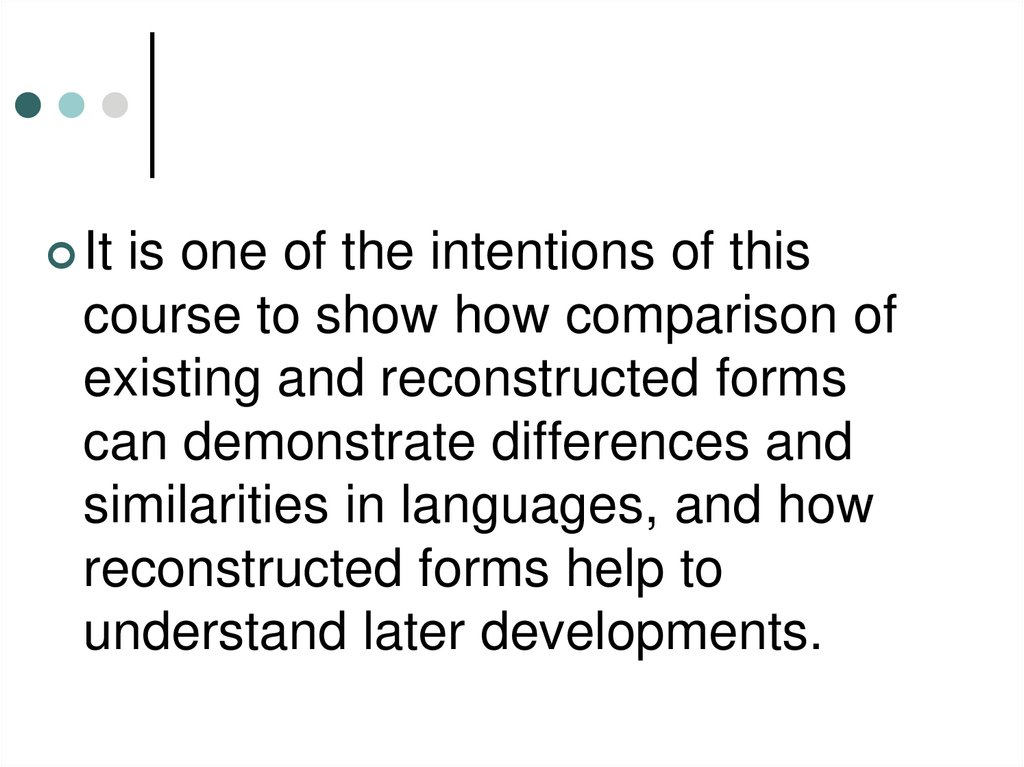






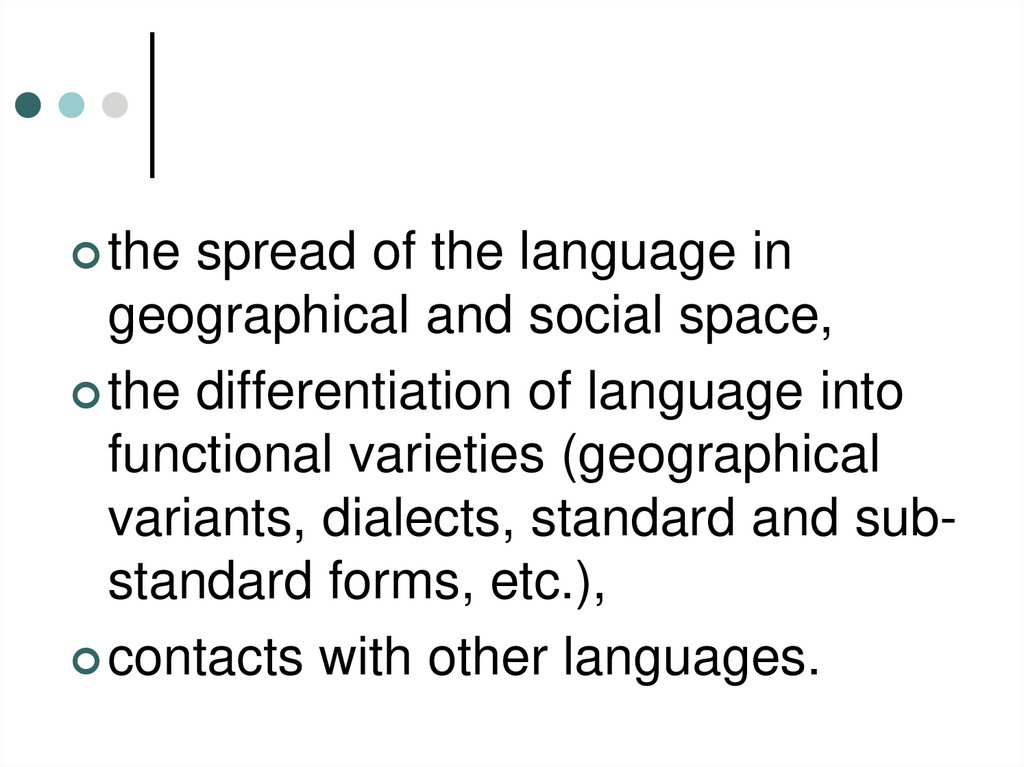




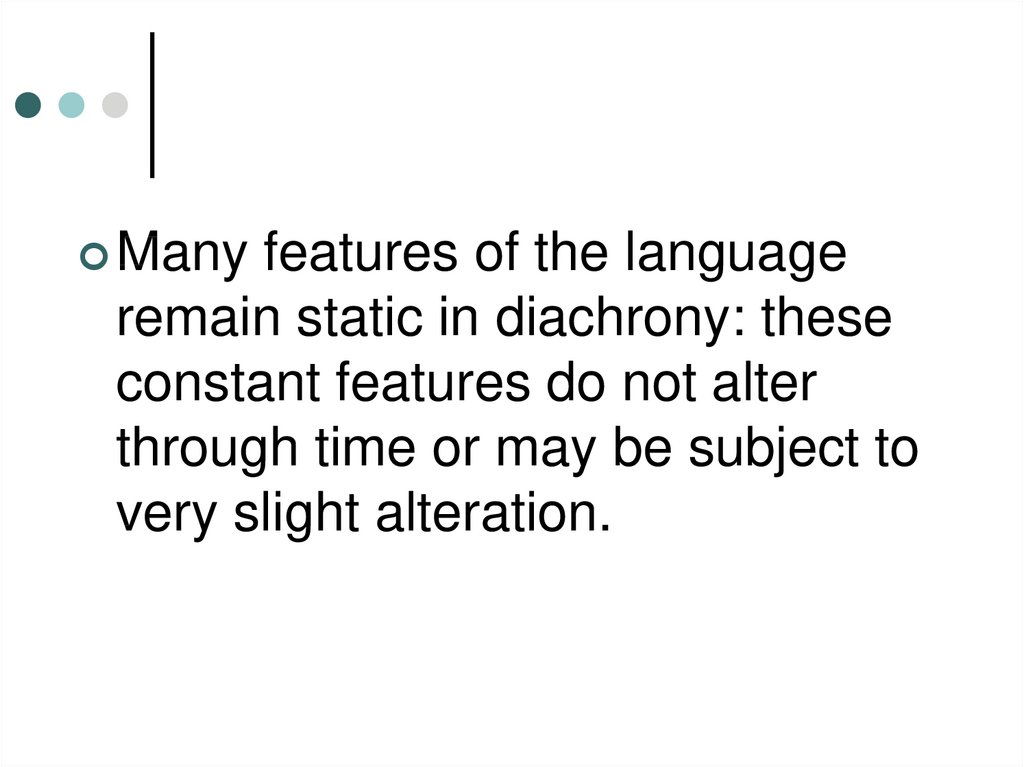




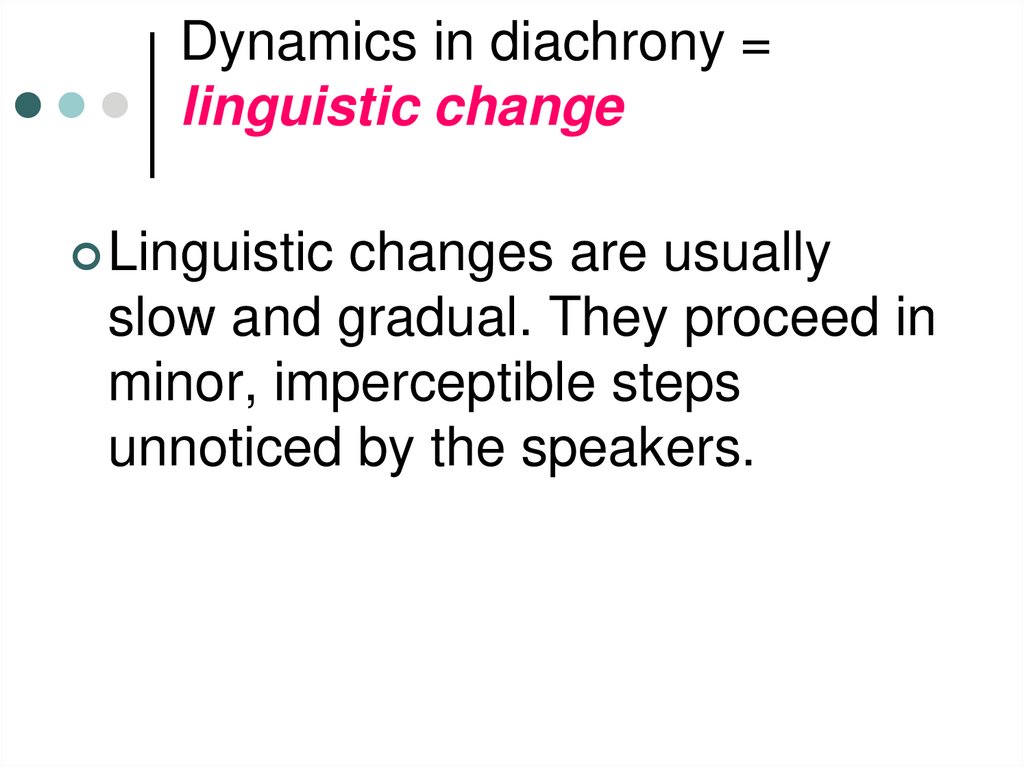




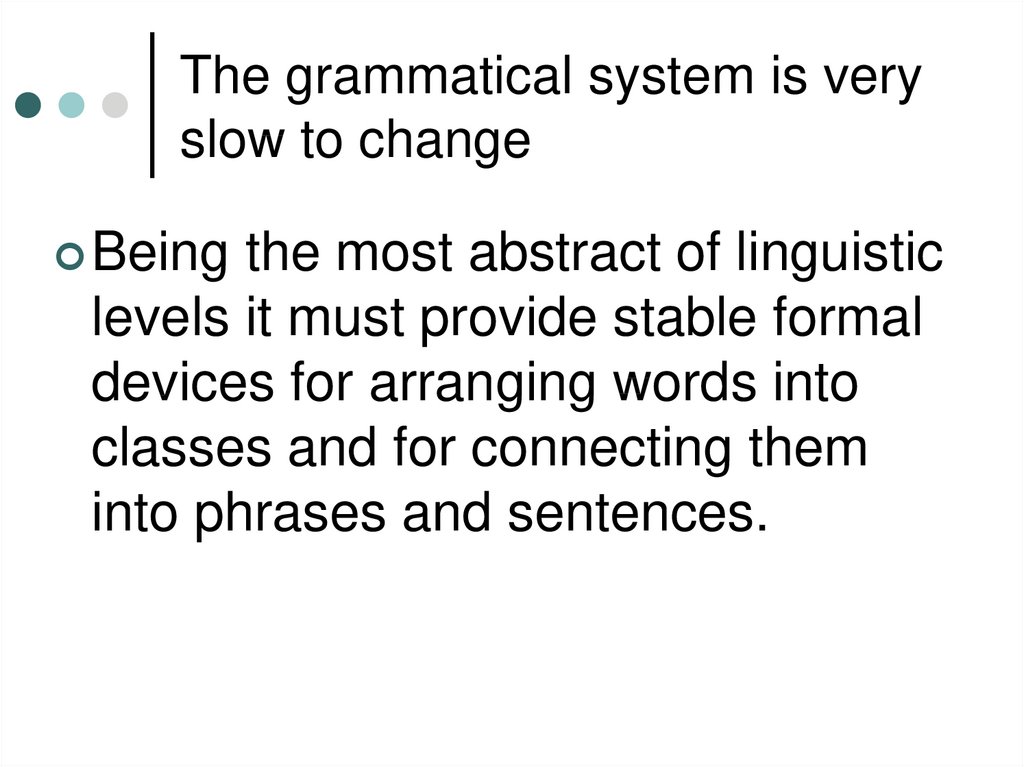





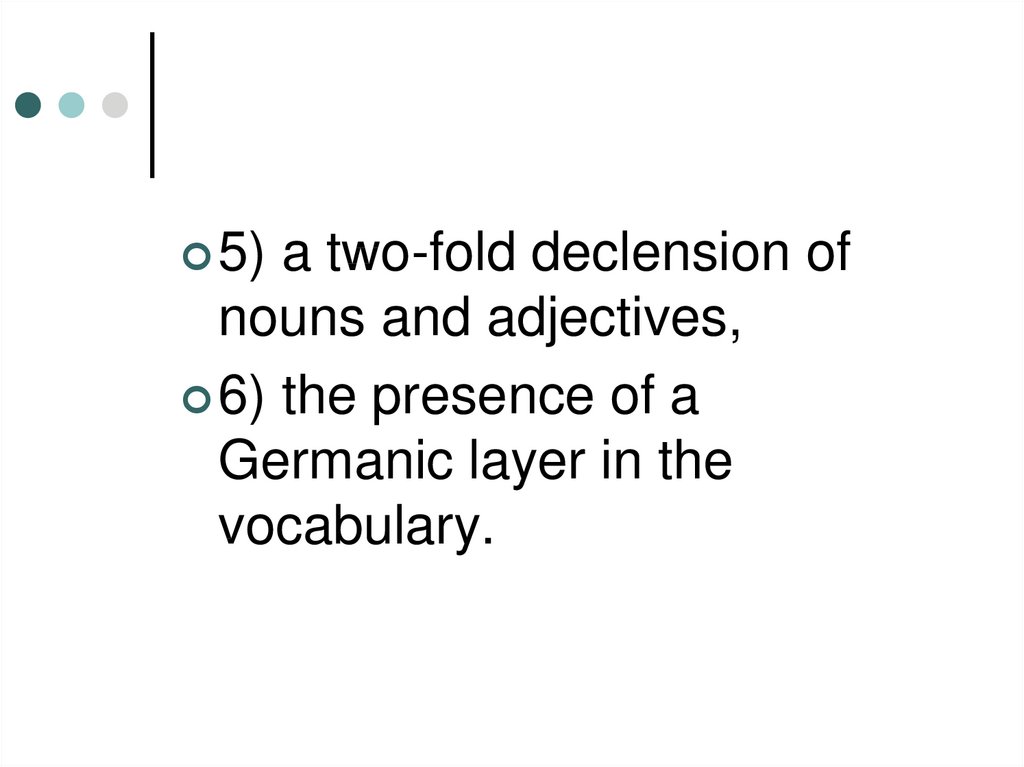




















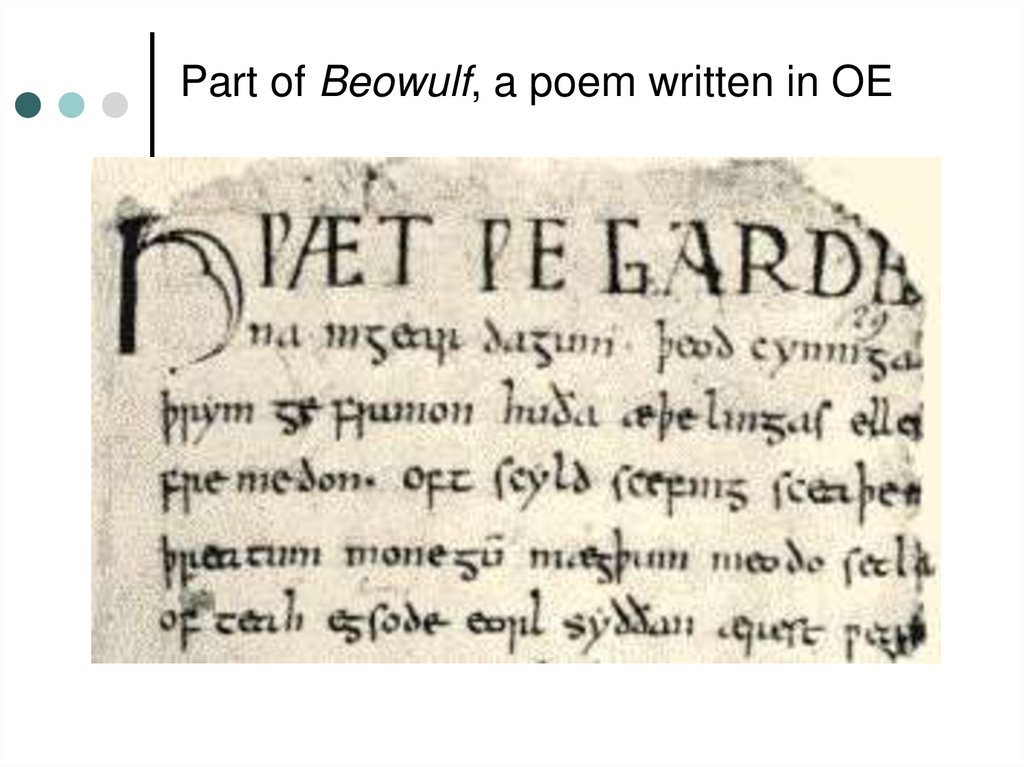

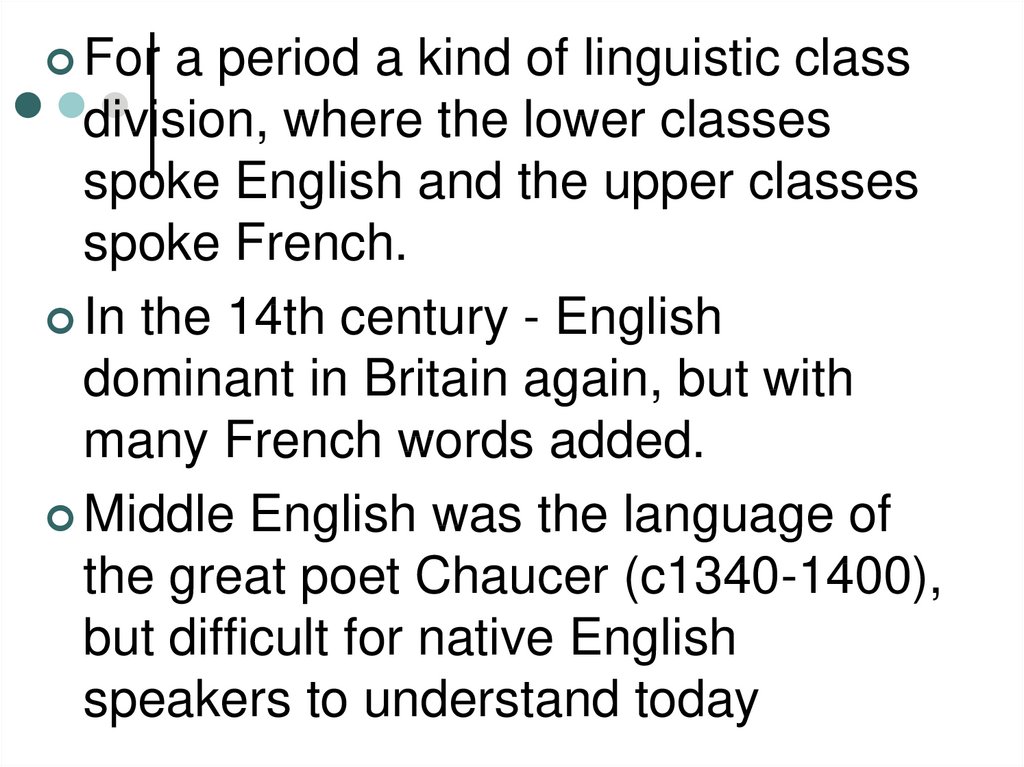
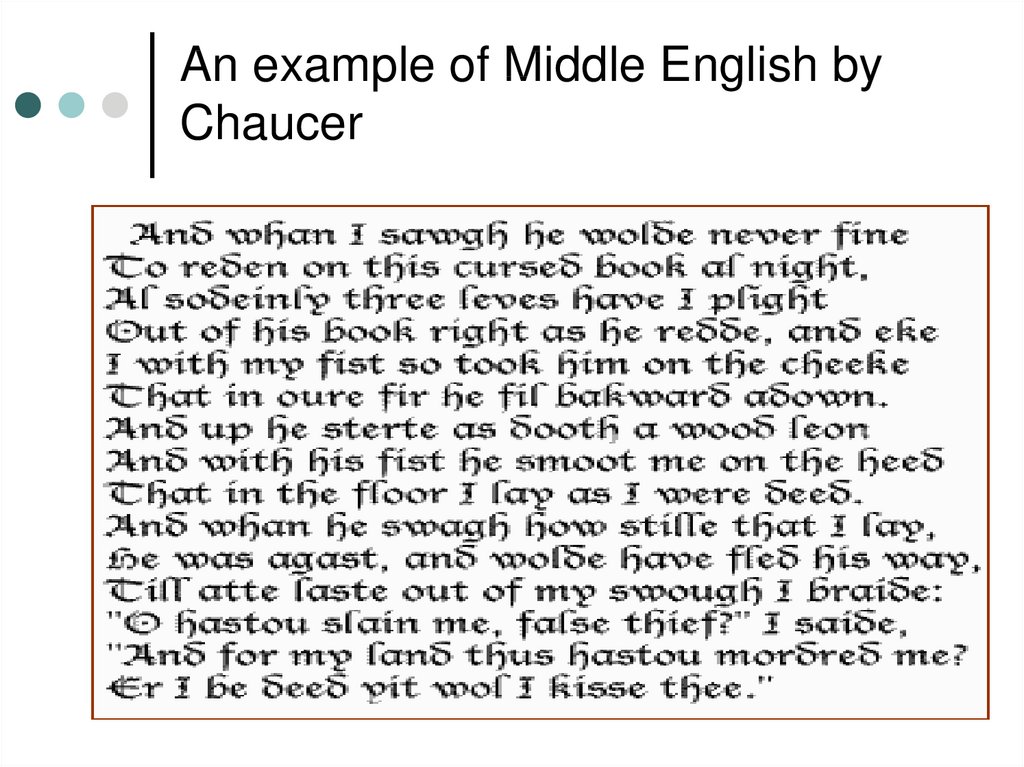


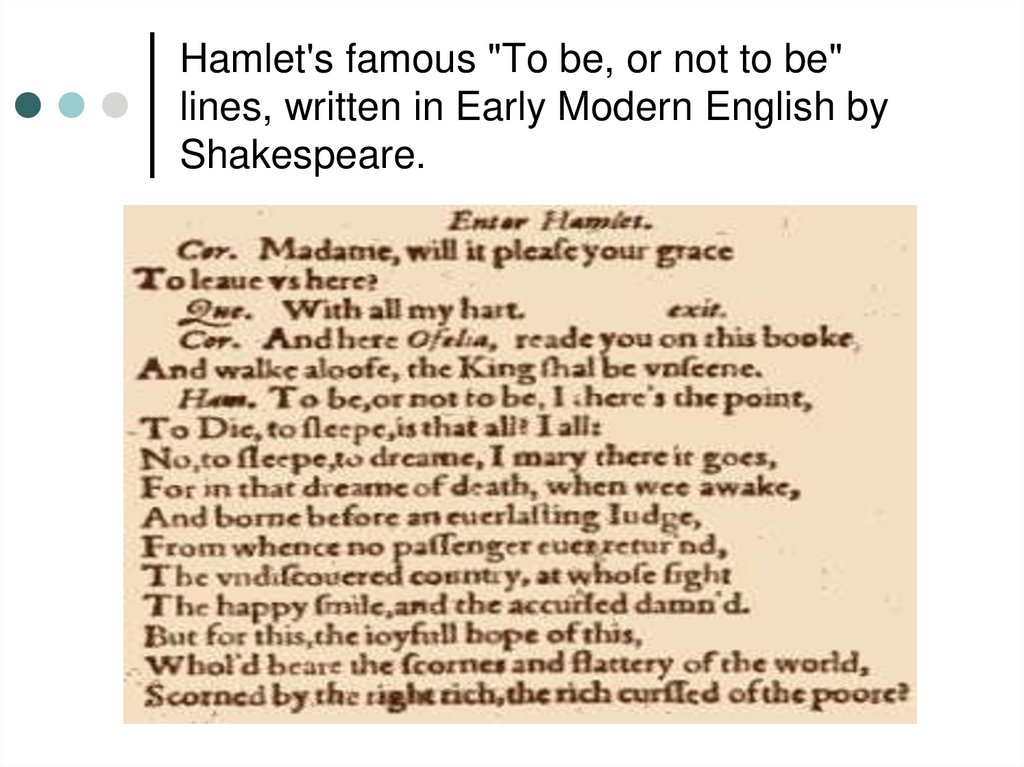



 english
english








